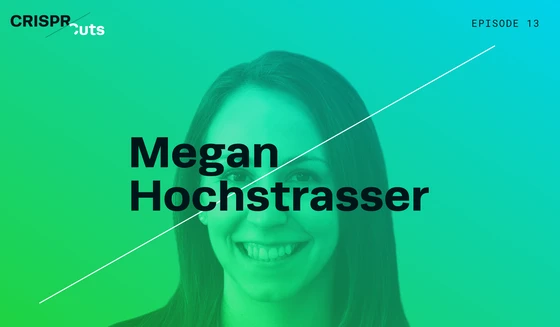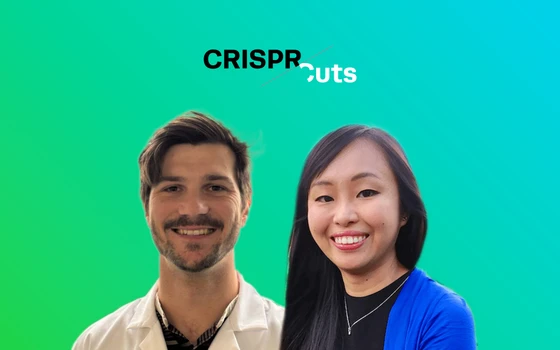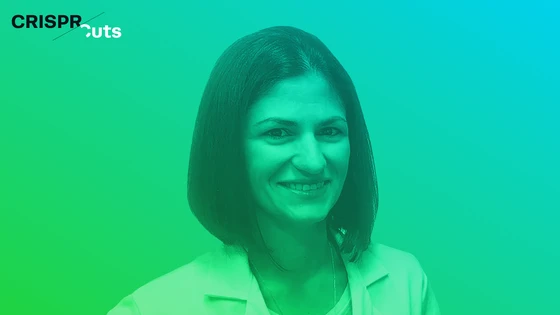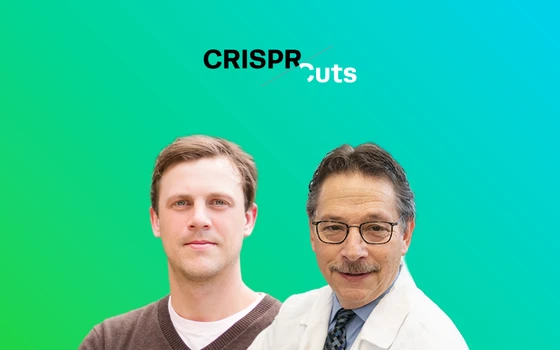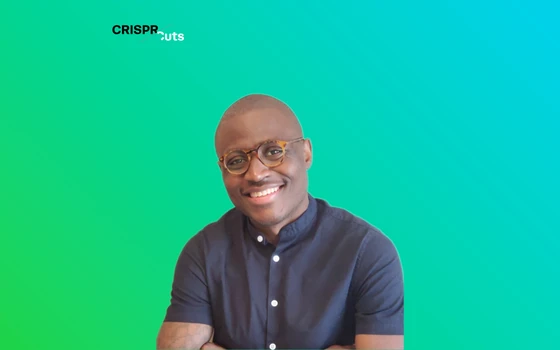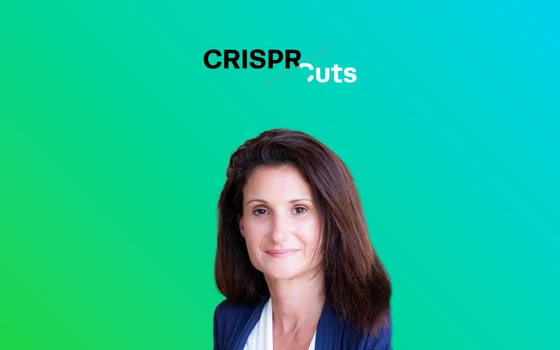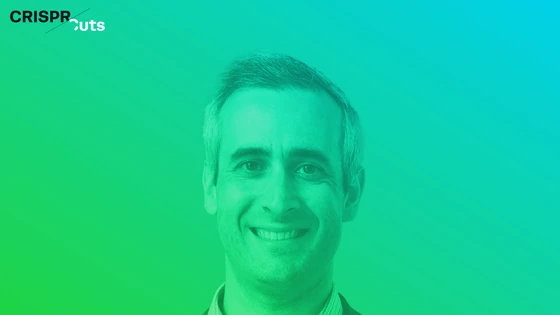Science communicators play a serious and influential role in the world of science. With so much skepticism and misinformation spread online about cutting-edge science tools like CRISPR genome engineering, science communication is more important now than ever to help the public understand scientific research, methods, and findings.
In this episode of our CRISPR Cuts podcast, we sat down with Megan Hochstrasser, Science Communications Manager at the Innovative Genomics Institute. Enjoy this episode by listening to the audio, or keep reading to see how our conversation with Megan played out! We covered some topics related to Science Communication, including:
- What is a Science Communicator?
- Top Science Communicators to Follow
- 5 Key Takeaways from this Podcast About Science Communication
- Megan Hochstrasser’s Background & Experience
- Why is Science Communication Important?
- Why is Science Communication Difficult for CRISPR Scientists?
- Who are Science Communicators Writing for, and How are They Making Science More Accessible?
- 3 Ways the Innovative Genomics Institute Teaches Science
- How Do Scientists Partner with Science Communicators?
- Who Helps Develop IGI’s Science Communication Material?
- Exciting Upcoming Projects from the Innovative Genomics Institute
- Fun Experiences from a Science Communicator
Skip to any of these topics to read more about them, or dive in here to start learning about what science communicators are and what they do.
What is a Science Communicator?
A science communicator is a person who helps communicate science-related information to people who are not experts in the field, including scientists in other fields and the general public. Science communicators can help rally support for scientific research and prevent the spread of misinformation.
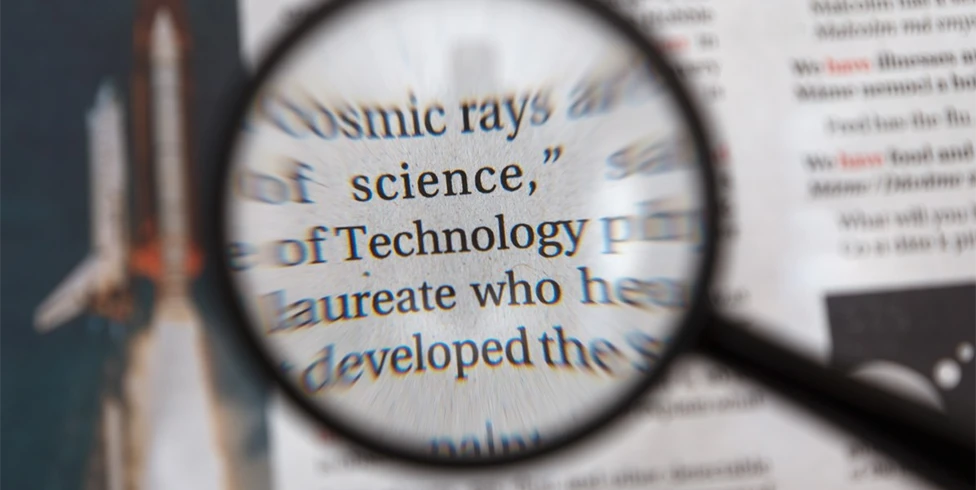
Essentially, science communicators are the middle ground between complex scientific concepts and the general public. They have the experience to fully understand the science they write about, and the skills to communicate the information to those without a science background. Science communicators are key to preventing the spread of ideas about the unrealistic dangers of science, like those seen in TV or movies about CRISPR.
Top Science Communicators to Follow
If you’re looking to learn more about science communication to see how useful it is, these five people are great examples of science communicators making an impact in the field right now.
1. Megan Hochstrasser (@thecrispress)
Hochstrasser is the Science Communications Manager at IGI. She received her Ph.D from UC Berkeley in 2016, and is an expert in molecular biology, structural biology, and CRISPR technology.
2. Dr. Alice Roberts (@thealiceroberts)
Roberts is the Professor of Public Engagement in Science at the University of Birmingham. After starting her career in the field of clinical medicine, she received her Ph.D in paleopathology from the University of Bristol in 2008. Roberts is well known for presenting several BBC documentaries including Digging for Britain, Origins of Us, and Prehistoric Autopsy.
3. Brian Cox (@ProfBrianCox)
Cox is a professor of particle physics at the School of Physics and Astronomy at the University of Manchester. He is best known as the presenter of BBC’s series Wonders of Life, in which he explains the science behind things like gravity, sight, and the senses.
4. Elizabeth Bonnin (@lizbonni)
Bonnin is a biochemist and and animal biologist with BSc in biochemistry from Trinity College Dublin, and an MSc in wild animal biology and conservation from the Zoological Society of London and the Royal Veterinary College. She is known for hosting programs like Bang Goes the Theory, and Science Friction which look at taboo scientific topics.
If you’re looking for more places to learn about science from other great science communicators, check out this awesome list of the top CRISPR journalists.
5 Key Takeaways from this Podcast About Science Communication
In this podcast, we cover what science communication is and why it’s so valuable to the industry, as well as new ways science communicators are presenting information. Here are some of the fundamentals we cover in this episode:
1. Science communication ensures that scientific information is properly delivered.Science communicators help scientists explain their research and findings to non-scientists in simpler terms, spread the word about new discoveries, and make sure that accurate information is presented.
Time in podcast: 3:00
Jump down here to learn more
Science communicators help scientists explain their research and findings to non-scientists in simpler terms, spread the word about new discoveries, and make sure that accurate information is presented.
Time in podcast: 3:00
Jump down here to learn more
3. Science communicators aim to educate a variety of people.While a science communicator’s main audience may be the general public, they can also assist with communication to people within the scientific community.
Time in podcast: 5:00
Jump down here to learn more
While a science communicator’s main audience may be the general public, they can also assist with communication to people within the scientific community.
Time in podcast: 5:00
Jump down here to learn more
4. IGI uses media and technology to revolutionize science communication.The IGI presents information using a variety of media types including videos and 3D virtual reality. These technologies are changing the way scientific information is presented, and may help non-scientists gain a deeper understanding of scientific topics, especially when it comes to CRISPR, or how science is helping advance medicine.
Time in podcast: 6:15 & 16:45
Jump down here to learn more
The IGI presents information using a variety of media types including videos and 3D virtual reality. These technologies are changing the way scientific information is presented, and may help non-scientists gain a deeper understanding of scientific topics, especially when it comes to CRISPR, or how science is helping advance medicine.
Time in podcast: 6:15 & 16:45
Jump down here to learn more
5. Science communicators are getting people excited about science.While some scientific topics don’t always captivate the interest of the general public, science communicators help people realize how exciting and interesting these topics are, and can often change their perspective.
Time in podcast: 27:00
Jump down here to learn more
While some scientific topics don’t always captivate the interest of the general public, science communicators help people realize how exciting and interesting these topics are, and can often change their perspective.
Time in podcast: 27:00
Jump down here to learn more
Megan Hochstrasser’s Background & Experience
Learn about who Megan Hochstrasser is, and how she got involved in science communication and CRISPR.
Minu Prabhune: Welcome to CRISPR Cuts. Our guest today is Megan Hochstrasser, the Science Communications Manager at the Innovative Genomics Institute (IGI). Can you tell us a little bit about yourself and how you got to this position of science communications manager at IGI?
Megan Hochstrasser: I started out as a scientist, getting my undergrad degree at Brown in Biology, and then I came directly to grad school at UC Berkeley and ended up joining Jennifer Doudna's lab in 2012, which was an interesting time to join, as it coincided with CRISPR becoming a genome-editing tool and becoming what it is today.
While I was there, I was doing just biochemical experiments, and collaborating for structural biology. But I got more and more interested in the communications side of science, and I started editing a lot of peoples' papers, commenting on how they were laying out their figures, and occasionally did some volunteering and outreach and things of that nature. Around graduation, I was looking into all kinds of different jobs, like science writing and technical writing, and I briefly flirted with the idea of doing some kind of industry research, but I really wanted to go the non-research route.
Around that time the IGI was expanding; we started as an initiative, and then eventually became an institute. When that happened, we wanted to re-do our website to have a more formal communications presence online. Jennifer mentioned that they were trying to hire someone to do communications for IGI, and that she thought I should try it. I went for it, and it's been really nice. I've been able to really direct a lot of what I do, and if I have an idea to pursue, I have a lot of freedom to try new things.
Why is Science Communication Important?
Science communication is vital in today’s society where many people can be skeptical or hesitant to trust the results of scientific research. Science communicators can help non-scientists to understand things like:
- How and why a topic is being researched
- The principles behind a certain experiment
- Research methods
- How funding is used (especially where tax dollars are concerned)
- Why a piece of misinformation is incorrect
- Other information that can make science-related topics more accessible to the public
Find out more about the reasons why science communication is so important for the field, and for the public - directly from Megan Hochstrasser.
Minu: Obviously you work on a lot of sci-comm, genomics, and CRISPR-related content, but before that, before CRISPR became big, you were thinking of getting into science communication, right? Why do you think science communication is important?
Megan: I think the reason I really wanted to move into communication and education was because that was the side that got me interested in science to begin wih. When I was graduating, I was thinking back to why I started in science and the video games I played on the computer, like “Magic School Bus Inside the Human Body,” and I thought, "that would be really fun to pursue, and to be the one making those things, and inspiring a new generation of people to appreciate science."
It can be really hard to get messages out and make sure they're reliable, so if you want to make a big difference in the world, you need people to understand what you're doing, not feel like you're doing it behind their back, and communicate along the way.
Why is Science Communication Difficult for CRISPR Scientists?
Learn why CRISPR scientists may have a harder time communicating their research methods and findings than scientists in other fields.
Minu: Do you think it's particularly difficult for CRISPR scientists to get their word out, especially because of the hype around this tool in general? Some people believe that it's going to cure everything, and some people believe that it's going to kill everyone. With all these extremes, is that another challenge that you face with CRISPR communication?
Megan: I think CRISPR is kind of unique because, on the one hand, its popularity and hype is a plus because it's easy to get people interested and care about what you're talking about; they've heard something about it, but they don't really understand. But then as you're saying, on the other hand, it's really hard to combat some of the wild things people might have heard about it. We see new headlines about CRISPR almost every day, and they're on the spectrum of boring, realistic, absurd, and crazy.
It can be hard to combat some of the misinformation, but I think overall a lot of the people I talk to seem not to have an in-depth understanding, but when they have heard of CRISPR before, they get the gist of what it can do, and they definitely put some of their own fears and emotional reactions onto it.
Who are Science Communicators Writing for, and How are They Making Science More Accessible?
Learn about the target audience of science communicators, and exactly what they do in their work to make sure the general public understands what it is they’re talking about.
Minu: Who is the general audience that you're communicating to? Is it other scientists, the general public, or a mixed bag?
Megan: It's mixed. For the IGI, I handle communications. I think we're going to expand soon, but we definitely are communicating to other scientists within the organization and outside. My emphasis is largely on the general public, and all of the audiences that are included within it. When I talk about people that might have misinformation or misperceptions, those are usually people that I'm going to give a talk to somewhere, or maybe students that come here for a field trip, and lot of Lyft drivers. That's kind of my most frequent exposure to the general public.
3 Ways the Innovative Genomics Institute Teaches Science
Learn about the three strategies and media types the IGI makes use of to teach scientific topics.
1. VideosMegan: My general strategy with IGI's sci-comm has been to diversify the media that we use, and not to exclusively use written forums. We try to have a lot of videos, and make use of more innovative or emerging technology. We have a video game called "Phage Invaders," we're working on an augmented-reality app to explore protein structure, and a virtual-reality experience to go do genome editing in cells.
Megan: My general strategy with IGI's sci-comm has been to diversify the media that we use, and not to exclusively use written forums. We try to have a lot of videos, and make use of more innovative or emerging technology. We have a video game called "Phage Invaders," we're working on an augmented-reality app to explore protein structure, and a virtual-reality experience to go do genome editing in cells.
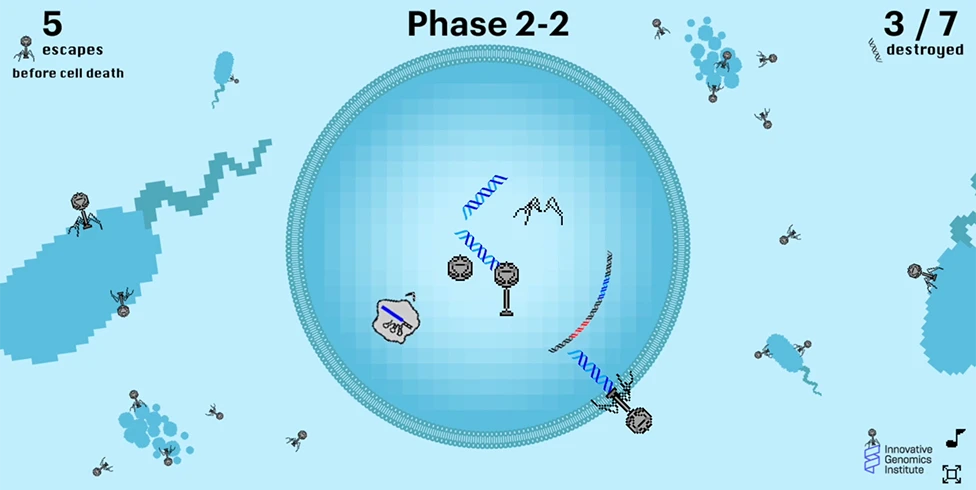
How Do Scientists Partner with Science Communicators?
In general, I want to make sure it's fun, and that it's interesting in the ways that I've always found science to be interesting, especially when I was younger. We’re also striving to ensure that alongside it being fun, it's very accurate and reliable. In general I hope that we can become a positive resource for people that are looking for information on CRISPR, and are seeing a lot of disparate pieces that they won't necessarily connect.
We've been making whiteboard videos to communicate the main findings of some of our research papers from the IGI, and we've been calling them "IGI Paper Delivery." We’re trying to give people this little bit of news about academic papers to make it accessible and interesting, and so they don't actually have to read the paper. I think, hopefully, scientists can appreciate that too, but they're mostly tuned in for the general-audience level of understanding. We're also making general CRISPR explainers through whiteboard videos as well.
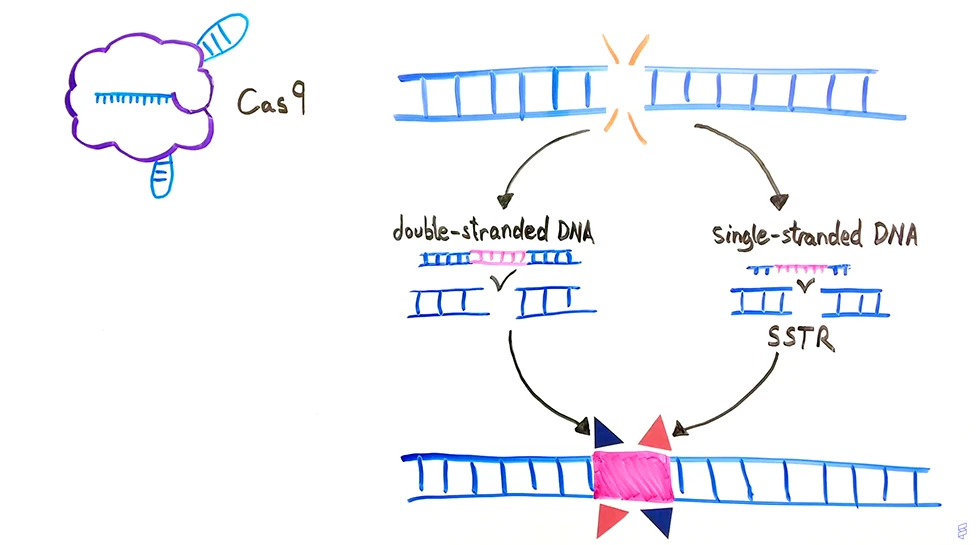
Minu: I have seen those whiteboard videos, and even as someone who is aware of CRISPR and have read a lot about it, I still find them extremely useful. In a lot of our blogs, or even in some of our education materials, I often embed those videos. They are really great, so good job on that!
Megan: Oh, great, thanks. I want to make more. They're fun. They take a lot of work, though.
Minu: Yeah, exactly, I understand the level of dedication the process takes, which is why I haven't gotten around to making any for Synthego! The other communication efforts that you do as well like the video game or the playing cards and things like this are very innovative. I think that you're right in saying that not everyone learns in the same way, so there are more reasons for people to learn from you and the IGI because the communication is done in so many different ways.
2. Online resourcesMegan: We're trying to become a kind of ‘hub’ that has different resources that work for different kinds of people. Because not everyone wants to learn in the same way or is interested in the same things, we basically do two categories of sci-comm.
Our main one is mostly online resources, so very widely-accessible electronic communication. One example of that would be the whiteboard videos, we've been making a few of those recently. Those are really fun, because we work with high school students sometimes, and mostly undergrad students here at Berkeley to do the actual drawing and mapping out of the video. Those are the videos where you see someone's hand frantically drawing and sped-up on a whiteboard to illustrate a scientific concept. They're really fun because they integrate visual communication with a really concise script and little animations.
Megan: We're trying to become a kind of ‘hub’ that has different resources that work for different kinds of people. Because not everyone wants to learn in the same way or is interested in the same things, we basically do two categories of sci-comm.
Our main one is mostly online resources, so very widely-accessible electronic communication. One example of that would be the whiteboard videos, we've been making a few of those recently. Those are really fun, because we work with high school students sometimes, and mostly undergrad students here at Berkeley to do the actual drawing and mapping out of the video. Those are the videos where you see someone's hand frantically drawing and sped-up on a whiteboard to illustrate a scientific concept. They're really fun because they integrate visual communication with a really concise script and little animations.
3. In-person events & programsMegan: We have this program called "Ask a Scientist," where we connect these random requests from students that we get to volunteer scientists who want to kind of hone their chops at doing sci-comm and talk to the public. We will Skype in with a classroom, for example, or just do a one-on-one phone call, answer things via email, that kind of thing. We do a lot of events like tours and field trips.
Megan: We have this program called "Ask a Scientist," where we connect these random requests from students that we get to volunteer scientists who want to kind of hone their chops at doing sci-comm and talk to the public. We will Skype in with a classroom, for example, or just do a one-on-one phone call, answer things via email, that kind of thing. We do a lot of events like tours and field trips.
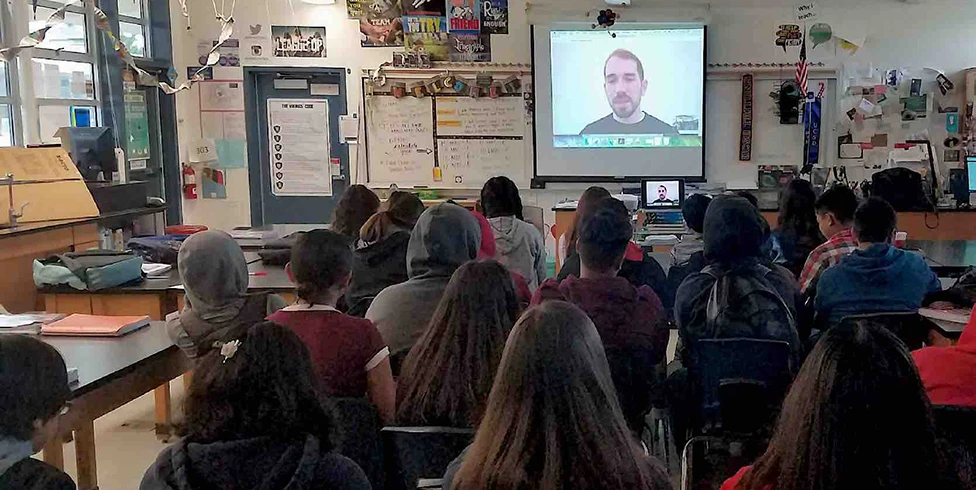
We recently did a community science day, just outside the building here, which was really cool. We had virtual reality there, kids were making DNA models out of candy, and we had a photo booth where they could dress up in lab coats, which was really adorable. We try to hit it on both sides with local things in the community, as well as the more widely-accessible online content.
Minu: Right. And do you have a preferred method of communication between all of these?
Megan: Not really. I like science writing a little bit, but I think any time I can avoid having exclusively written communication, I like it. I really like visuals, and more fun things like that.
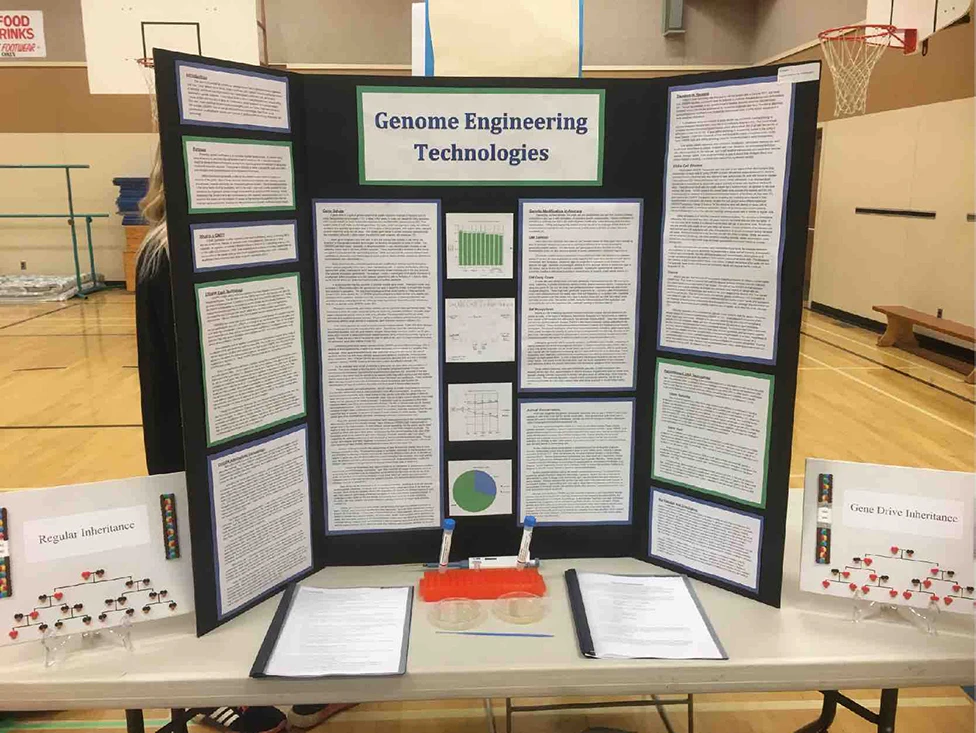
It can't all be fun, though, because a lot of what we're talking about are serious diseases, and medical situations. I think that's kind of interesting to think about how to make that kind of content stimulating without it being cheesy or geeky to the extent that it's offensive in some way.
We try to balance the serious message that we're really doing important work here that's going to help people, with making it accessible and interesting to people.
How Do Scientists Partner with Science Communicators?
CRISPR 101 eBook
CRISPR has quickly become a standard laboratory tool for gene editing. As the adoption of CRISPR accelerates worldwide, up-to-date knowledge of the basics of CRISPR is essential for anyone in the field. From target identification studies to the recent breakthroughs in clinical trials, CRISPR is enabling scientists to unlock the power of the genome.
Download our CRISPR 101 eBook today to stay up to date on all your CRISPR basics and get the best results in your CRISPR experiments!
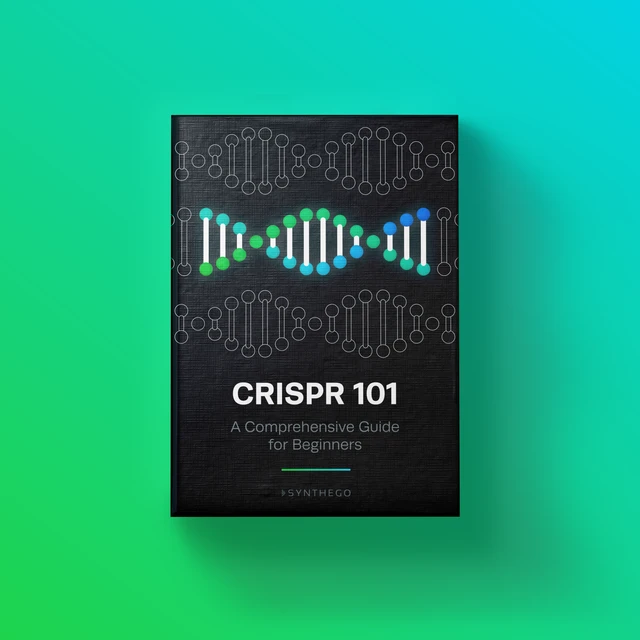
Learn about how scientists and science communicators interact, and how science communicators can facilitate communication between scientists and non-scientists.
Minu: Apart from "Ask a Scientist," how are the scientists at Berkeley actually involved in any of the partnering institutes involved in IGI communication? Do you reach out specifically, or is it assumed that they'll help?
Megan: I've found a lot of different people that are really interested in talking to people in the public or students. I think a lot of people very much aren't, and that's fine too. I do think science communication is a great skill to have regardless of what you're doing, though, because even if you're just going to write research papers and you're never going to talk to anyone in the public, you want to be able to make your research exciting to other researchers, and accessible.
I sometimes see papers that are in Science, Nature, or Cell, and I know they should matter, but I try to look at them and they're impenetrable to read. It's just a lot of heat maps, or things that I can't totally grasp in the amount of time that I have for it. I think being able to make your title and abstract at least demonstrate that some of your message is important is key, and I think it's just a really valuable skill to have in general to become respected in your field and make what you're doing accessible to other people.
Minu: I absolutely agree, and I think even a slight difference with just the graphical abstract has made a huge difference in the understanding of the papers. It's a small initiative, but things like this emphasize why we need communication, and why scientists should at least try. Not everyone's going to be great at it, but they should make the effort to communicate, or at least contribute to communications to help spread the word about their research.
What's the point of keeping it in the lab? I absolutely agree, it's very essential, and I'm glad that more and more scientists are now realizing the benefits and importance of this; in participating in these events, or even with online resources.
Megan: We've had a lot of really helpful people reach out that just want to get involved to do something, or when we do ask for volunteers, we usually can get quite a few good people. Never enough, but people can be great, and we've been trying to offer more training for things. It's kind of hard, but I'm interested in expanding the sort of communications training that we offer to at least IGI scientists, and hopefully beyond, in the future.
Who Helps Develop IGI’s Science Communication Material?
Learn how the material presented by science communicators is developed, and by whom.
Minu: If someone is, say, really interested in making these videos, are you open to people just approaching you who are not from Berkeley or UCSF, but are approaching you and want to participate in one project? Do you undertake projects like this, or do you have a team that works on all the communications material?
Megan: We're totally open to working with other people and collaborating. I think the biggest issue is the budget. If someone needs us to pay them, we might not be able to, but if someone just wants to volunteer, it’s much easier to collaborate. Right now, we have an undergrad student that we're working with on whiteboard videos, she just said "I love doing art, and I'm also in science, and I would love to help out," so we just brought her on-board. With the whiteboard videos especially, but in general, it's also easier if someone's local and we're all together, trying to set up the camera so there's no shadow, and everything.
That would be hard to do remotely, but we're definitely very open to collaborations. Right now, it's me and Kevin Doxzen that work on most of these projects, and then we have a few other people in IGI that we work with, but we're the two communications people. Everyone else that works on our projects are undergrad volunteers, high school summer interns, and other people like that.
Minu: That's still really a great opportunity for anyone who wants to start out, and just needs a platform, or is happy to get some help or perspective on their work. That’s great to hear that you're open to new people just trying out new things.
Megan: Absolutely. We just started a blog series for when our seminar speakers come and visit. We have an undergrad who is interested in science writing and general science communication, who interviews each of the seminar speakers that we bring to visit, and then writes up a little interview that she puts on our website. I think there are a lot of opportunities to create small spaces like that that are manageable projects for an undergrad, or someone at that level that can try their hand.
Exciting Upcoming Projects from the Innovative Genomics Institute
Learn about IGI’s upcoming projects that will assist in science communication.
Minu: Are there any particular projects upcoming that you are excited about?
Megan: There's a lot of upcoming projects. I don't know how many I can talk about yet, but I think one that I'm really excited about is a virtual reality project we're working on, and we're doing this in collaboration with the Lawrence Hall of Science, which is UC Berkeley's campus science museum.
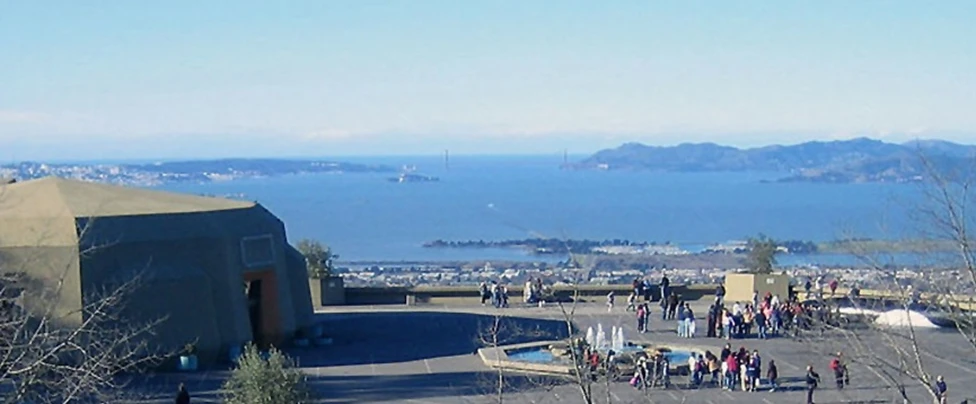
We're working with them, and a company from Oakland called Dynamoid, to create a virtual reality experience where the user is wearing the whole virtual reality headset, and they get to dive into a human body. The intention of this one is first, to show how sickle-cell disease works, and second, how it could be treated using genome editing.
This is a really cool platform because you can see at all levels how the disease would affect somebody. We have a simulated patient and a human body, and you can zoom in to different levels of magnification; you can see the body level, the tissue, you can go inside the blood vessel and see the red blood cells moving around behind you, you can see in the sickle cell, you can see the shape, you can see the mutation at the DNA level, you can see it at the protein level, you can see how it makes the hemoglobin aggregate, and you can see how it (the aggregated hemoglobin) distorts the cell shape.
I think it's a cool way to teach how a disease happens, especially a genetic disease, because I think it sounds very abstract to have a typo in some DNA that people don't really understand, and it's hard to see how that would affect some really big, zoomed-out macro thing like red blood cells, and circulation.
The genome-editing side of it is kind of a plus. Once you've established that you understand how sickle-cell is working, you can actually go in and trigger Cas9 to target the hemoglobin mutation and replace it with a healthy copy. Then you can see how you might cure a patient.
I'm really excited about that because I think it can work on so many different levels. If you're an elementary-school student, you're probably not going to get to the CRISPR part; you're probably just going to see what it's like to go inside a body and see cells, and learn those basic things. If you're older though, or perhaps even a sickle-cell patient or a doctor that's talking about a possible CRISPR treatment that we might have one day, you could use this in that context to try to make it more understandable and see how it might work.
I think it'll be really cool, and it will reach even bigger audiences. It's going to be on the planetarium dome at Lawrence Hall, so you won't need to have the VR setup that not a lot of people have. You'll get to be able to go there, and instead of seeing space and stars, which are so boring and passé, you can see cells and the human body. I think it'll be awesome!
Minu: Yeah, I think so too. It's a brilliant idea. When do you think this is scheduled for completion? When can we visit this?
Megan: That's a good question. It's taking a little bit longer than expected, because we just keep working on it and adding new things. But it will probably be accessible in the next couple months, I would say.
It has really advanced a lot, and I'm actually going to test it next week. We have an undergrad journal club that we do every week, and I'm going to test it out with them, and see what the undergrads think of the whole experience. It's getting close, and I think it should be launched soon.
I'm hopeful to be able to use it during field trips and activities like that. Or if visitors come here, I think we should be able to slap the headset on one person and then put what they're seeing on a projector so everyone can see it and simultaneously have the experience.
Fun Experiences from a Science Communicator
Learn about Megan Hochstrasser’s favorite experiences as a science communicator.
Minu: As a science communicator, you are in a privileged position to work with a lot of scientists, and then you also get to meet a lot of people who are not scientists. Do you have any fun anecdotes or encounters that you want to share?
Megan: When I'm giving a talk somewhere, people will afterwards say things like, "I thought this was going to be really boring. I read your talk title and I thought it sounded really, really boring. But then, it was really cool, it turned out to be really interesting." That also happened with a student, where he said, "I thought I just had to do this for school, and it was going to be really lame, but that was actually cool."
I think people, a lot of times, don't really think these sorts of scientific topics are going to be interesting, but then when they learn a little more, they realize that there's so much here, and I think that's the fun part of being a science communicator, especially with CRISPR, because there's really something for everyone. You can edit any bit of DNA you want in any organism for any reason.
There's always something someone's interested in. For example, one time we had a field trip here, and we were talking to seventh-graders, and we were saying, "you know, there could be the opportunity to enhance people with CRISPR and genome editing." I think we were talking about embryo editing and ethics there. We said, "Is there any reason that you can think that you wouldn't want to do something like that?" One kid raised his hand, and he said "You would make super bullies. You could make bullies that are so strong."
And I was like, ‘Oh man, I never would have thought about that.’ It lets you bring whatever you want to it, because there's so much potential, it's kind of fun to try to find different ways to talk to people and find something that works for them, and something they're interested in discussing.
Minu: Especially as a communicator, I think that it's the best compliment that you can get, that you surpassed someone's expectations, and that they learned a lot more than they thought they would, which is the whole point of science communications. So that's really great.
Megan: I totally agree.
Minu: Great, so, if any of our listeners want to get in touch with you, what is the best way to find you?
Megan: You can find me on Twitter. I'm @thecrispress. I'm on the IGI website, innovativegenomics.org, you can find me on the staff page, it has my email address. If you want to collaborate, or just chat about strategies for communicating about different aspects of CRISPR, I'd be happy to talk to you.
If you want to learn more about CRISPR, check out our massive list of the best CRISPR news sources to keep on top of new science communications coming out!
